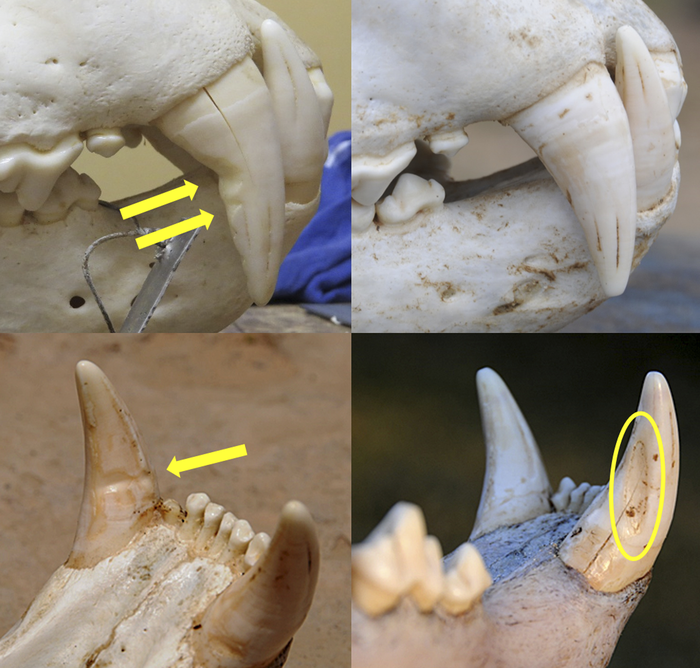Researchers recently looked at the impacts of wire snares and shotgun pellets on lions and leopards in Zambia. Through the forensic examination of skulls and teeth, they discovered that humans are harming these animals more often than previously thought.
The primary threat to large cats in the African wild is human activity. Increasing development and deforestation are encroaching on what used to be large swaths of territory for these big predators to live and hunt in. As humans close in on that territory, lions and leopards are more likely to be injured and killed.
“It was very alarming to ultimately see the frequency of it,” study author Paula White told Earther.
In their paper, published in Frontiers in Conservation Science, the researchers say that looking at the damage that wire snares cause lions and leopards throughout their lifetimes could be a key factor in understanding the effects of poaching, apart from simply looking at how many cats were killed.
“Mortality is the most common metric used to assess human impacts on wildlife,” White said in a press release. “However, non-lethal injuries, that are often more cryptic, should also be considered when evaluating human impacts on wildlife.”
White and colleague Blaire Van Valkenburgh, both of the University of California, Los Angeles, used photos to compare natural wear on the lions and leopard’s teeth, comparing it to the more serious damage caused by shotgun pellets or wire snares. The photos showed large, noticeable indents in teeth from snares.

In a sample of skulls from 112 lions and 45 leopards from two areas of Zambia — the Luangwa Valley and the Greater Kafue ecosystem — at least 37% of adult male lions and 22% of adult male leopards had been caught in a snare at some point in their life. They also found that a little over a quarter of the lions studied were found to have shotgun pellets embedded in their skulls.
“[The wear from snaring and shooting] are old injuries that the animal survived,” White told Earther. “It’s a conservative estimate, because if an animal had been shot somewhere else in the body, we wouldn’t have been able to document that only looking at the skulls.”
White also pointed out that if a lion or leopard is killed by a person trying to defend themselves, their family, or livestock, the carnivore’s death is likely to go unreported to authorities.
More and more people in countries like Zambia are turning to bushmeat, or the meat of wild animals in Africa. Bushmeat can include monkeys, rats, bats, and even snakes. This practice has often put people and animals in competition with each other for food and space. Other factors, including rapidly growing human populations and agriculture, have led to a more than 40% decline in Zambia’s lion population in the last two decades. Often, the people poaching bushmeat to eat or sell do so out of financial necessity, which has made the practice harder to stop.
“Bushmeat is a significant problem in Zambia. For us, it’s by far the biggest threat to our wildlife populations,” Luwi Nguluka of Wildlife Crime Prevention, told Mongabay in 2020.
Zambia and other countries with lion populations also host several anti-poaching programs. Conservation South Luangwa runs anti-snaring patrols and longer field patrols and investigations to prevent the decline of wildlife populations in the Valley.
White said the study could help establish patterns to understand how lions and leopards are being poached or hurt by human activity. She hopes that future research will aid the country’s conservation efforts over time.
“[The findings] can help us understand more of a geographic pattern and more of the frequency in these areas. It’s very difficult to get numbers on carnivore mortalities,” she said. “A lot of times, they just disappear.”
